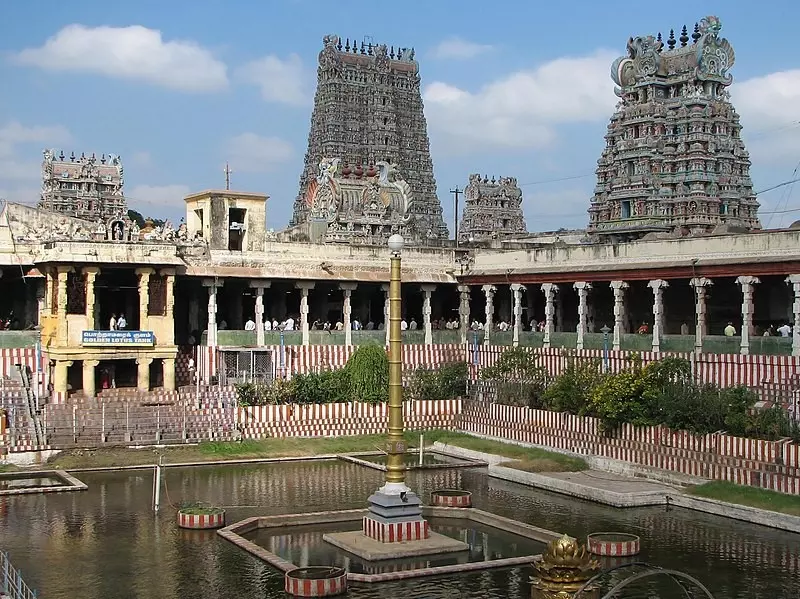
Panel recommends provisions in AMASR Act to fix accountability of govt officials

New Delhi, Dec 17 (PTI) A parliamentary panel has recommended to the Centre that in the upcoming amendment of the AMASR Act, "strong provisions" may be incorporated for fixing accountability of government officials to ensure necessary steps are taken timely for tackling encroachment of centrally protected monuments.
The department-related Parliamentary Standing Committee on Transport, Tourism and Culture, in its report, has also strongly recommended that provisions to "empower the local bodies for the protection of historical monuments" and to make them accountable may be incorporated in the amendment of the AMASR Act that is being worked upon by the Culture Ministry.
'Three Hundred Sixty Third Report on the Action Taken by the Government on the recommendations/ observations of the Committee contained in its Three Hundred Twenty-Fourth Report' on 'Issues relating to Untraceable Monuments and Protection of Monuments in India', was presented in both Houses last week.
The sites under the Archaeological Survey of India (ASI) are maintained under the ambit of the AMSAR (Ancient Monuments and Archaeological Sites and Remains) Act.
At present, over 3,690 monuments are under the ASI.
"The Committee takes note of the existing framework and recommends that in the upcoming amendment of the AMASR Act being worked upon by the Ministry, strong provisions may be incorporated for fixing accountability of concerned government officials to ensure that necessary steps are taken timely for tackling encroachment of Centrally Protected Monuments," the report says.
The officials concerned should be "liable to be prosecuted in case of gross negligence of their duties" with regard to tackling encroachment of CPMs, it said.
The Committee further recommends that the Culture Ministry may examine the powers given to District Forest Officers (DFOs) under The Wildlife (Protection) Act, 1972 and "consider granting similar powers to ASI officials" in order to effectively curb the issue of encroachment of centrally protected monuments, it added.
The ministry in its response has told the panel that "amendment in the AMASR Act, 1958 is under consideration".
The panel has further observed that it is "concerned to note that out of the 3,693 Centrally Protected Monuments, security guards are posted at only 248 CPMs/sites/museums i.e. less than about 6.7 per cent of the total number of CPMs".
"The Committee notes with dismay that out of the total requirement of 7,000 personnel for the protection of monuments, the Government could provide only 2,578 security personnel at 248 locations due to budgetary constraints," the report says.
The parliamentary panel observes that "budgetary constraints should not be an excuse for not providing security guards to protect our rich cultural heritage", adding it is the "bounden duty of the Government of the day to protect our cultural heritage sites".
The Committee, therefore, recommends that a budget may be provided by the government to appoint 7,000 personnel for the protection of the monuments or as per the study conducted by IIT, Delhi.
"In view of this worrying state of affairs, the Committee is of the strong view that the budgetary allocation available with the Ministry/ASI for safeguarding our centrally protected monuments needs a serious relook," it has said.
The Committee recommends that the Culture Ministry, the ASI may conduct an "urgent thorough assessment" of the security requirements and budgetary allocation required for the same and a "strong case may be made to the Ministry of Finance" requesting allocation of additional funds for this purpose so as to ensure a basic state of protection for all Centrally Protected Monuments across the country to preserve them for generations to come, the panel said in its report.
The Committee also recommended that the local panchayats and police may be involved in safeguarding the monuments and if necessary, the AMASR Act may be amended in this regard.
The ministry in its response has told the panel that in 2022, the ASI signed an MoU with the Indian Institute of Technology, Delhi in collaboration for providing expertise in the field of security and surveillance on monuments, sites, museums, and offices.
"A dedicated team of experts from the partnered institution will visit centrally protected monuments and will furnish an analysis report containing short, medium and long term security challenges along with solutions. Thereupon a comprehensive security policy to combat various identified issues faced at the CPMs will be drafted," it said.
Subsequently, the requirement of the funds may be identified and accordingly, the requirement will duly be placed. The recommendations of the committee are duly noted for exploring feasibility, the ministry told the panel.
The Committee, in its report, has also noted that "no proposal exists at present with ASI for empowering local bodies to provide security guards to the unprotected monuments".
The Committee feels that given their proximity and cultural ties with local monuments, local bodies are best suited to look after the protection of historical monuments especially those which are not under the list of Centrally Protected Monuments (CPMs), the report says. PTI

